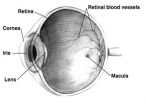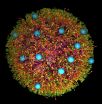(Press-News.org) When it comes to getting out of a tricky situation, we humans have an evolutionary edge over other primates. Take, as a dramatic example, the Apollo 13 voyage in which engineers, against all odds, improvised a chemical filter on a lunar module to prevent carbon dioxide buildup from killing the crew.
UC Berkeley scientists have found mounting brain evidence that helps explain how humans have excelled at "relational reasoning," a cognitive skill in which we discern patterns and relationships to make sense of seemingly unrelated information, such as solving problems in unfamiliar circumstances.
Their findings, reported in the Dec. 3 issue of the journal Neuron, suggest that subtle shifts in the frontal and parietal lobes of the brain are linked to superior cognition. Among other things, the frontoparietal network plays a key role in analysis, memory retrieval, abstract thinking and problem-solving, and has the fluidity to adapt according to the task at hand.
"This research has led us to take seriously the possibility that tweaks to this network over an evolutionary timescale could help to explain differences in the way that humans and other primates solve problems," said UC Berkeley neuroscientist Silvia Bunge, the study's principal investigator. "It's not just that we humans have language at our disposal. We also have the capacity to compare and integrate several pieces of information in a way that other primates don't."
In reviewing dozens of studies - including their own - that use neuroimaging, neuropsychology, developmental cognitive and other investigative methods, Bunge and fellow researchers concluded that anatomical changes in the lateral frontoparietal network over millennia have served to boost human reasoning skills.
"Given the supporting evidence across species, we posit that connections between these frontal and parietal regions have provided the necessary support for our unique ability to reason using abstract relations," said Michael Vendetti, co-author of the study and a postdoctoral researcher in neuroscience at UC Berkeley.
Relational reasoning is a high-level cognitive process in which we make comparisons and find equivalencies, as one does in algebra, for example. First-order comparisons identify the relationship between two items or activities in the following ways: semantic (hammer is used to hit a nail); numeric (four is greater than two); temporal (we get out of bed before we go to work) or visuospatial (the bird is on top of the house). Second-order or higher-order comparisons take this a step further by equating two or more sets of first-order relations (a chain is to a link as a bouquet is to a flower).
To test their hypothesis that the human gift for relational reasoning can be traced to developmental and evolutionary changes in the brain's lateral frontoparietal network, the researchers examined studies that track anatomical changes in the developing human brain; compare neural patterns in human and non-human primates, and compare how human and non-human primates tackle various reasoning tasks.
Their exhaustive meta-analysis identified three parts of the brain that play key roles in relational reasoning, the rostrolateral prefrontal cortex, the dorsolateral prefrontal cortex and the inferior parietal lobule, with the rostrolateral region more actively engaged in second-order relational reasoning.
In looking at brain development, they found that "synaptic pruning," which usually takes place in adolescence when white matter replaces gray matter and signals between neurons speed up, was more evident in the inferior parietal regions of the brain.
Also crucial to their finding was a study led by Oxford University neuroscientist Matthew Rushworth that compared neural patterns in humans and macaque monkeys. While human and non-human primates were found to share similarities in the frontal and parietal brain regions, activity in the human rostrolateral prefrontal cortex differed significantly from that of the macaque monkey's frontal cortex, the study found.
"We had hypothesized that there could have been evolutionary changes to this region to support our reasoning ability, so we were really excited when Rushworth and his colleagues came out with these findings," Vendetti said.
Meanwhile, in the behavioral studies they analyzed, humans were found to use higher-order strategies to guide their judgment while non-human primates relied more heavily on perceptual similarities and were slower at reasoning and problem-solving.
"These results do not necessarily prove that non-human primates are unable to reason using higher-order thinking, but if it is possible to train non-humans to produce human-like performance on tasks associated with higher-order relational thinking, it is certainly not something that comes naturally to them," the study concluded.
Overall, Bunge said, "The findings allow us to gain insights into human intelligence by examining how we got to where we are by examining our changes across both evolution and development."
INFORMATION:
Scientists have developed a new light-sensitive film that could one day form the basis of a prosthetic retina to help people suffering from retinal damage or degeneration. Hebrew University of Jerusalem researchers collaborated with colleagues from Tel Aviv University and Newcastle University in the research, which was published in the journal Nano Letters.
The retina is a thin layer of tissue at the inner surface of the eye. Composed of light-sensitive nerve cells, it converts images to electrical impulses and sends them to the brain. Damage to the retina from macular ...
A new research brief from the US2010 Project probes the status of minorities in American suburbs. Suburbs in 2010 were as racially and ethnically diverse as were central cities in 1980, and that diversity is still increasing. Yet minorities are not finding equal access to the American dream in the suburbs where they live, a lesson illustrated recently by Ferguson, MO.
Suburbia has always been less segregated than central cities. Segregation is slowly declining between suburban blacks and whites, but has stayed about the same for Hispanics and Asians over three decades. ...
Do you consider yourself a conscientious person? Then sign up for a fixed-rate mortgage. Neurotic? You'll probably opt for home ownership over renting.
According to a new study published in the Journal of Behavioral and Experimental Economics, personality traits are strong indicators of real-estate decisions. The research, by Dr. Danny Ben-Shahar of Tel Aviv University's Faculty of Management and doctoral candidate Roni Golan of the Technion Institute of Technology, finds a correlation between personality and individual real estate choices, and a follow-up study by the ...
Those wishing to prove themselves as "doers" must not only be hands-on and demonstrate proactive behavior but also have social acumen and a feel for favorable opportunities. Those who rely on personal initiative alone will quickly be standing there as an isolated troublemaker. This is what psychologists from the University of Bonn and their colleagues from Florida State University (USA) have discovered through surveying a variety of occupational categories. The results have been published online in the renowned "Journal of Management". The printed version will be published ...
Learning from others and innovation have undoubtedly helped advance civilization. But these behaviours can carry costs as well as benefits. And a new study by an international team of evolutionary biologists sheds light on how one particular cost - increased exposure to parasites - may affect cultural evolution in non-human primates.
The results, published Dec. 3, 2014, in the journal Proceedings of the Royal Society B, suggest that species with members that learn from others suffer from a wider variety of socially transmitted parasites, while innovative, exploratory ...
This news release is available in German.
(Jena/Germany) Jena scientists have been successful in producing highly specific nanoparticles. Depending on the bound dye the particles are guided to the liver or to the kidney and deliver their payload of active ingredients directly to the targeted tissue. Moreover, the dyes enable the tracking of the transport processes by intravital microscopy or, in a non-invasive way, by multi spectral optoacoustic tomography. The reduction of cholesterol production induced by siRNA served as the proof-of-principle for the developed ...
What do lasers, neural networks, and spreading epidemics have in common? They share a most basic feature whereby an initial pulse can propagate through a medium - be it physical, biological or socio-economic, respectively. The challenge is to gain a better understanding - and eventually control - of such systems, allowing them to be applied, for instance to real neural systems. This is the objective of a new theoretical study published in EPJ B by Clemens Bachmair and Eckehard Schöll from the Berlin University of Technology in Germany. Ultimately, with a better theoretical ...
New research from the University of Adelaide has helped to shed light on the complexities of child sleep, and could lead to improved diagnosis of children with sleep-related breathing problems.
For his PhD in the University's School of Medical Sciences, Scott Coussens has been investigating how to accurately measure the level of sleep disturbance being experienced by children, to show whether or not they require treatment.
"Quality sleep is extremely important for children, especially at critical times of development. It can impact on the health of the brain and plays ...
New Rochelle, NY, December 3, 2014--Are adolescents who view pornography or music videos more likely to engage in sexting, in which they share sexually explicit content via text, photo, or video using cell phones, email, or social networking sites? A study of the media consumption and sexting behavior of more than 300 teens is published in Cyberpsychology, Behavior, and Social Networking, a peer-reviewed journal from Mary Ann Liebert, Inc., publishers. The article is available free on the Cyberpsychology, Behavior, and Social Networking website.
In "The Associations ...
Plastic waste is one of today's major environmental concerns. Most types of plastic do not biodegrade but break up into ever smaller pieces while remaining a polymer. Also, most types are made from oil, a rapidly dwindling resource. But there are promising alternatives, and one of them is polylactic acid (PLA): it is biodegradable and made from renewable resources. Manufacturers use PLA for disposable cups, bags and other sorts of packaging. The demand for PLA is constantly rising and has been estimated to reach about one megaton per year by 2020.
The research groups ...



